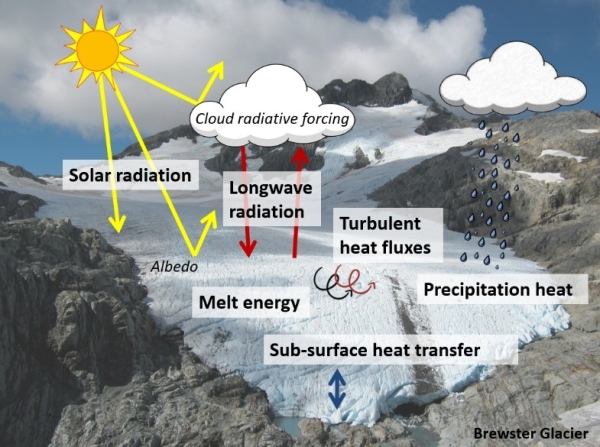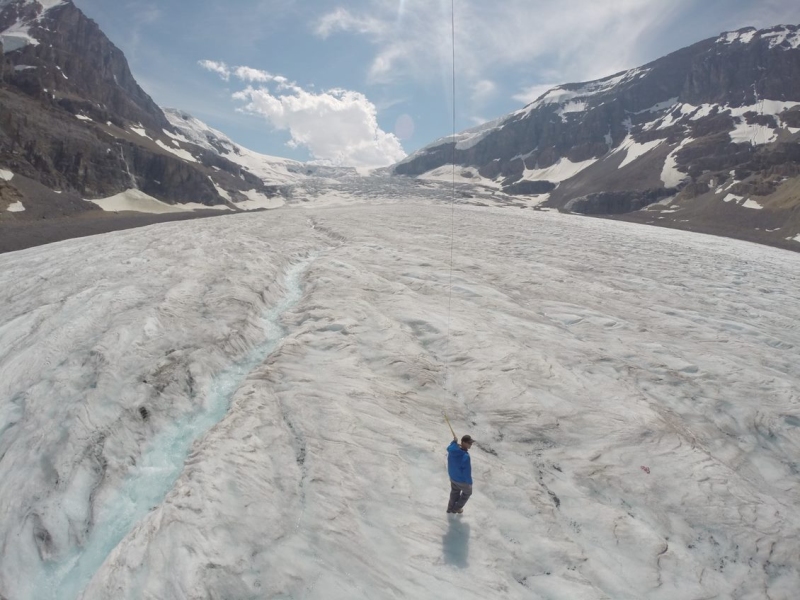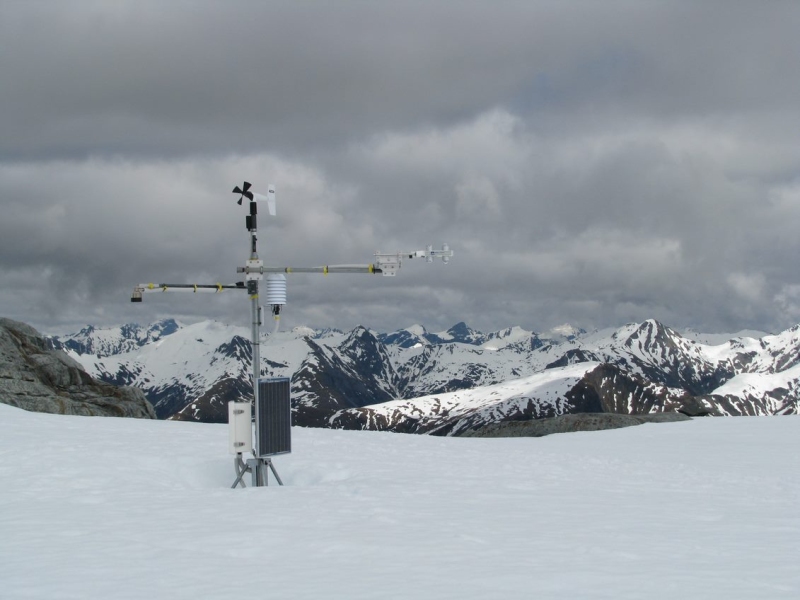Glaciers are iconic features of mountain landscapes with significant cultural, environmental, scientific, and economic value.
While we know that they are sensitive to changes in their local climate, our understanding of exactly how mountain glaciers will respond to climate change is incomplete. Specifically, the extent to which cloud cover will amplify or reduce the melting of a glacier in response to warming is uncertain.
Background
Clouds alter the solar and infrared radiation at the glacier surface and can enhance or dampen the influence of surface meteorology, albedo feedbacks and subsurface processes on melt. For example
- Clouds promote melting at night
- Clouds can stop the snowpack cooling down so that less meltwater refreezes inside the snowpack
- Clouds reduce the amount of solar radiation reaching the surface, which reduces the effect of increased albedo after snowfall
The main transfers of energy that determine the glacier melt (the surface energy balance)
Project aim:
Improve our understanding of the processes controlling interactions between clouds, surface meteorology and melt, and how those interactions may change in a warming climate.
Objectives:
We will use novel meteorological data collected over glaciers in the Southern Alps of New Zealand, the Canadian Rocky Mountains and other mountain regions around the world, along with state-of-the-art glacier-atmosphere modelling, to address our aim through four objectives:
By comparing analyses from diverse mountain climates in Objective 1, we can begin to understand which processes are more important for determining how a cloud modifies melt. For example, does cloud radiative forcing dominate the effect of clouds on melt, or is the relationship between clouds and other meteorological forcing and/or surface processes more important in different environments?
We welcome contributions of glacier surface meteorology and energy balance from glaciers in other regions for analysis in Objective 1 - see bottom of page for contact info.
In Objectives 2 and 3 we will address:
- How well do models capture the relationships observed in Objective 1?
- How might cloud cover in the mountains respond to warming?
- Does the way glacier melt changes with air temperature depend on cloud?
- How might cloud-meteorology-surface feedbacks affect future melt?
Outcomes:
By unravelling the interacting effects of clouds and other atmospheric processes on glacier melt in diverse mountain locations, our research will add to our fundamental understanding of the processes determining mountain glacier response to climate change. By identifying the key processes that determine how clouds affect melt, we can ensure they are included in models used to interpret or predict glacier response to changes in climate.
Project information:
- Funder: Royal Society of New Zealand, Marsden ‘Fast Start’ research fund
- Timeframe and budget: March 2019 - February 2022
- Principle Investigator: Jono Conway (National Institute of Water and Atmospheric Research, New Zealand)
- Associate Investigators: Martyn Clark, Warren Helgason, John Pomeroy (University of Saskatchewan, Canada), Ethan Gutmann (NCAR, USA).




